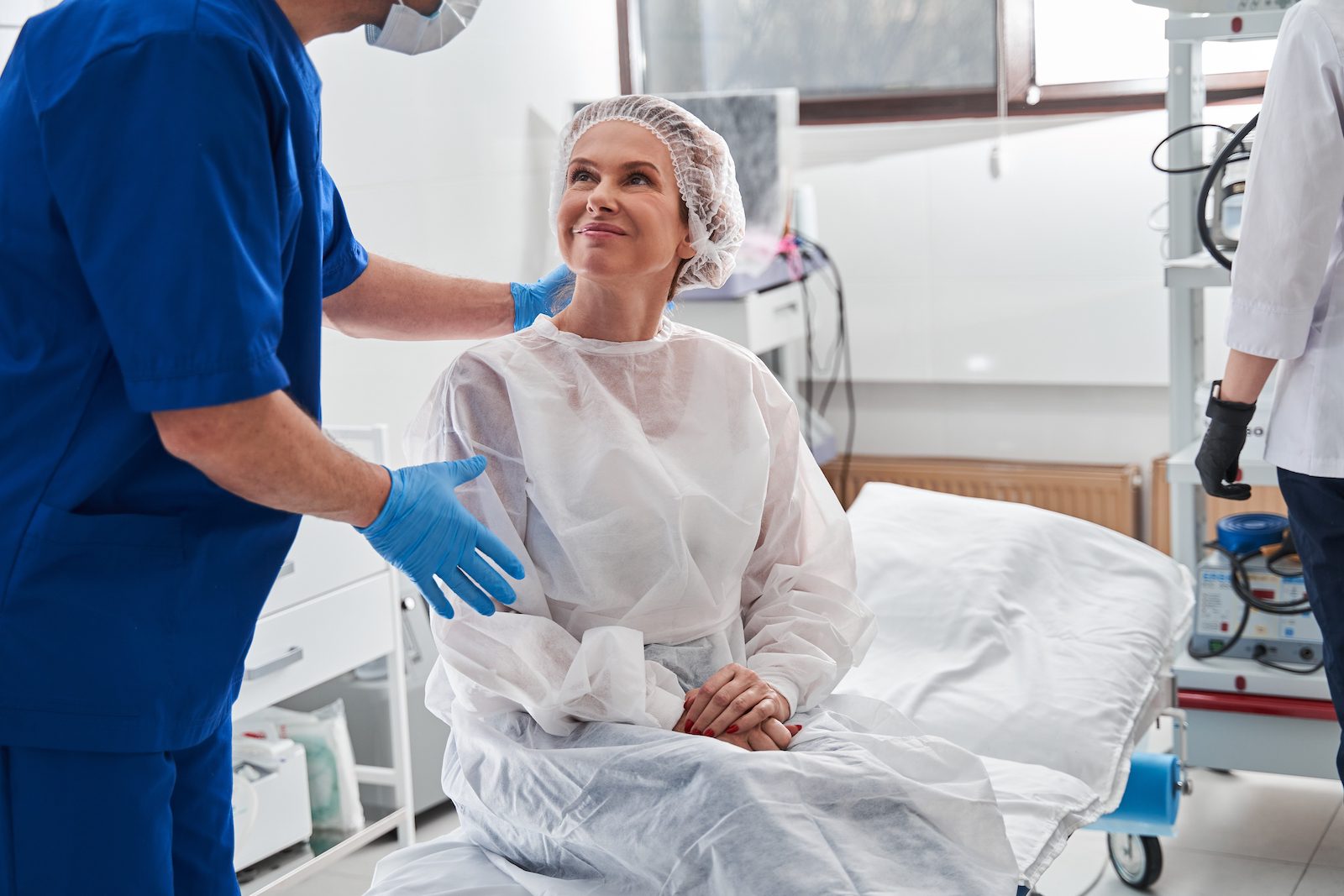Uvulopalatopharyngoplasty (UPPP) is a type of surgery used to treat obstructive sleep apnea (OSA). Although surgery is not a first-line treatment for most people with OSA, UPPP may be recommended when a continuous positive airway pressure (CPAP) machine and other treatments can’t be tolerated or don’t improve sleep apnea.
What is Uvulopalatopharyngoplasty (UPPP) Surgery?
Uvulopalatopharyngoplasty is an operation that targets tissues in the throat in order to keep them from interfering with breathing during sleep. This common surgery for obstructive sleep apnea gets its name from some of the tissues that may be moved, tightened, or taken out to create more space in the airway.
- Uvula: “Uvulo” refers to the uvula, which is the piece of tissue that hangs at the back of the mouth between the tonsils.
- Soft palate: “Palato” refers to the palate or the roof of the mouth. The soft palate is the rear portion of the roof of the mouth.
- Walls of the throat: “Pharyngo” refers to the pharynx, or the section of the throat from behind the nose to above the voice box.
There are many types of UPPP surgery. Doctors determine which procedures are needed by examining a person’s throat and determining the cause of their breathing problems.
Benefits of UPPP
Research has shown that UPPP surgery is associated with a wide range of benefits for people with obstructive sleep apnea, including a significant improvement in their quality of life. That said, there are many variations of this surgery and the benefits vary from person to person. If UPP successfully treats OSA, the benefits include:
- Improved breathing
- Reduced snoring
- Less daytime sleepiness
- Lowered risk of heart disease

Risks of UPPP
Like most surgical procedures, UPPP is also associated with certain risks. Most side effects get better during the first few months after surgery. Potential side effects of UPPP include:
- Pain
- Side effects of general anesthesia such as nausea
- Postsurgical pain, bleeding, and infection
- Liquids entering the nose while drinking
- Voice changes
- Difficulty swallowing
Some of the benefits of UPPP may also wear off over time. This may include a gradual return of snoring or nighttime breathing disruptions that require additional treatment.
UPPP for Sleep Apnea
Acupuncture is usually administered by inserting thin stainless steel needles into several of the 365 acupuncture points on the body. After carefully assessing their patient, an acupuncturist may insert between five and 20 needles, which are generally left in position for 10 to 15 minutes.
A person receiving acupuncture may experience a range of sensations, including throbbing, tingling, numbness, aching, and heaviness. Sometimes, acupuncture sessions also involve the use of heat, magnets, or electrical stimulation.
Although UPPP is effective for many people with obstructive sleep apnea, it’s typically not recommended until after people have tried less invasive treatment options. First-line treatments for OSA include lifestyle changes and nightly therapy with a CPAP or similar device.
When these initial treatments aren’t effective or the patient can’t tolerate them or incorporate them into their daily routine, doctors may suggest a second-line treatment like an oral appliance or surgery. Uvulopalatopharyngoplasty is the most frequently used surgery for treating obstructive sleep apnea.
UPPP surgery may be used alone to treat OSA, or it may be combined with other treatments. For example, people may need to continue treatment with a CPAP device even after they heal from surgery.
What to Expect
If your doctor has recommended UPPP surgery, it may be helpful to know what to expect prior to the day of surgery and after the procedure is complete.
Before UPPP Surgery
Before UPPP surgery, your doctor will discuss what to expect and any precautions that you need to take. To reduce the risk of complications, it’s important to tell your doctor if you are or may be pregnant, any medications or substances you take, and how often you consume alcohol.
After UPPP Surgery
UPPP surgery typically involves staying at the hospital overnight. During this time, you will be monitored for any side effects of anesthesia and ensure that you can swallow before going home. You will also be given a list of precautions to take during recovery.
It can take around two to three weeks to heal from UPPP surgery. During this time, it’s common to feel soreness or pain in your throat and have some difficulty swallowing. You may also experience a brief worsening of sleep apnea due to inflammation. Doctors commonly provide pain medicines to manage discomfort during recovery.
Your doctor will schedule a follow-up appointment within two or three weeks of the procedure to check on your recovery and discuss any side effects that may have developed. Additional follow-up visits will be scheduled to ensure that UPPP surgery was successful at treating nighttime breathing disruptions and other symptoms of sleep apnea.








